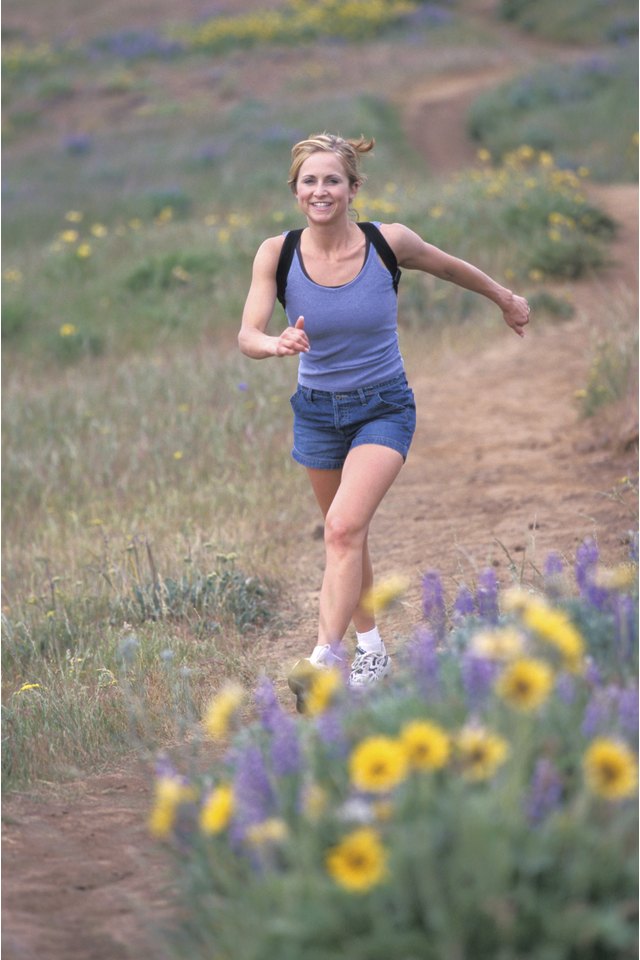What does fact checked mean?
At SportsRec, we strive to deliver objective content that is accurate and up-to-date. Our team periodically reviews articles in order to ensure content quality. The sources cited below consist of evidence from peer-reviewed journals, prominent medical organizations, academic associations, and government data.
The information contained on this site is for informational purposes only, and should not be used as a substitute for the advice of a professional health care provider. Please check with the appropriate physician regarding health questions and concerns. Although we strive to deliver accurate and up-to-date information, no guarantee to that effect is made.
Six Components of Motor-Skills-Related Fitness

Motor-skill-related fitness refers to your ability to learn and develop basic physical skills. These skills can be put into six categories: agility, balance, coordination, power, reaction time and speed. These elements are key building blocks for athletic success, but you also apply some or all of them in everyday life. Balance and coordination, for example, are used during common tasks such as walking or carrying dishes. Physically demanding professions -- such as fire fighting or construction work -- also require good motor-skill-related fitness.
Agility
If you’re agile on your feet, it means you can change directions quickly and smoothly, with little or no loss of speed. For example, picture a football player running back carrying the ball to his right and then quickly cutting to the left. Then, imagine someone rollerblading in the park, gliding along on his blades and then quickly dodging around an obstacle. Common agility drills include running through a rope ladder or stepping over a series of small hurdles.
Balance
A person with good balance can keep control of his body position while stationary or in motion on a variety of surfaces. World-class gymnasts are some of the best-balanced athletes in the sports world, as demonstrated by their intricate maneuvers on the balance beam. Ice skaters of all types -- from recreational to competitive -- must also maintain excellent balance on a slippery surface. Balance-improvement exercises include standing on one leg or shifting from one foot to the other.
Coordination
Coordination involves multiple body parts moving together or activities in which your senses and body operate in tandem. Walking, for example, involves a simple form of coordination as you put one foot in front of the other. Hitting a baseball is a more advanced form of coordination in which your body reacts to visual information. Ball drills can help improve your coordination, such as catching a ball after you toss it in the air or bounce it off of a wall.
Power
Power is different from raw strength since power involves the ability to apply your strength quickly and forcefully. For example, a strong football offensive lineman who lacks quickness may be less powerful than a smaller lineman who can surge explosively forward to block an opponent. A construction worker must have sufficient power to not only lift a sledgehammer, but to swing it explosively at his target as well. Performing plyometric jumping exercises is an efficient way to develop athletic power.
Reaction Time
Reaction time is just what the name indicates -- the amount of time you require to respond to external stimuli. Picture an Olympic sprinter, for example, moving just a fraction of a second after hearing the starting gun or a driver hitting the brake quickly to avoid striking an animal running across the road. Common athletic reaction-time drills include those in which players stand or run in place and then move in a particular direction after a coach’s signal.
Speed
Speed may be confused with reaction time. The sprinter who leaves the starting blocks first has the best reaction time, while the runner who’s traveling the fastest about midway through the race has the most speed. Speed may also refer to actions by only one part of the body, such as legs spinning rapidly on a stationary bike. Speed drills often involve strengthening the relevant body parts, such as a sprinter’s legs or a baseball pitcher’s arm.
References
- McGraw-Hill Education: Components of Skill-Related Fitness
- American Council on Exercise: 6 Exercises to Improve Agility
- MayoClinic.org: Balance Exercises
- Brian Mac Sports Coach: Coordination
- The Telegraph: Lifecoach: How Can I Improve My Hand-to-Eye Coordination?
- WebMD: Plyometrics
- Brian Mac Sports Coach: Reaction Time
- Human Kinetics: Fitness for Life: Middle School
Writer Bio
M.L. Rose has worked as a print and online journalist for more than 20 years. He has contributed to a variety of national and local publications, specializing in sports writing. Rose holds a B.A. in communications.
